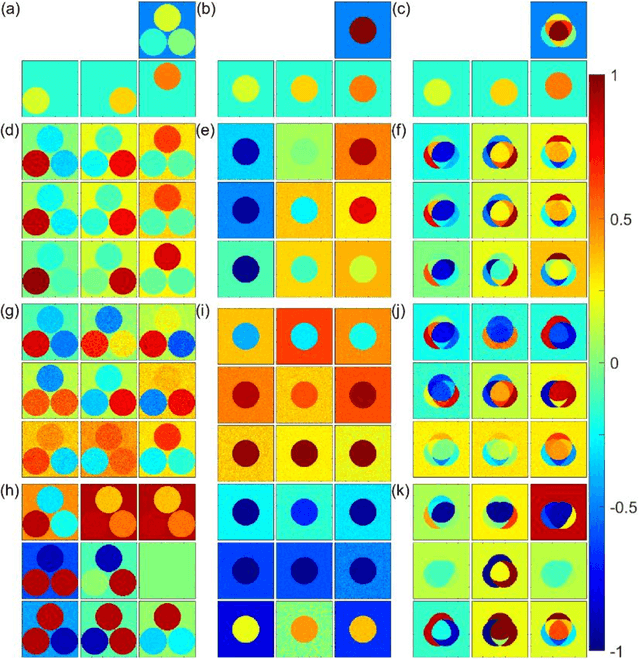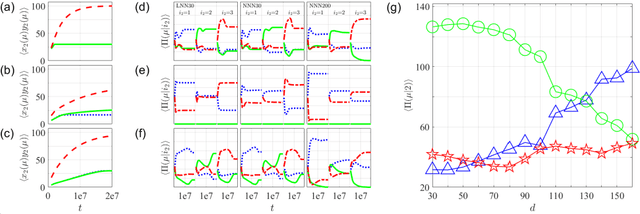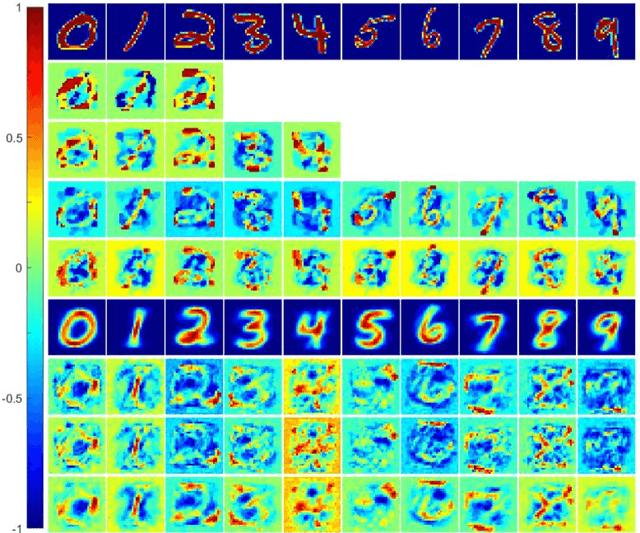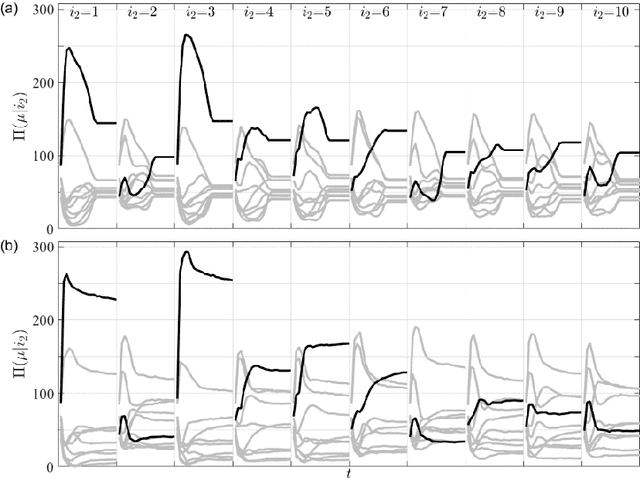How and what to learn:The modes of machine learning
Paper and Code
Feb 28, 2022



We proposal a new approach, namely the weight pathway analysis (WPA), to study the mechanism of multilayer neural networks. The weight pathways linking neurons longitudinally from input neurons to output neurons are considered as the basic units of a neural network. We decompose a neural network into a series of subnetworks of weight pathways, and establish characteristic maps for these subnetworks. The parameters of a characteristic map can be visualized, providing a longitudinal perspective of the network and making the neural network explainable. Using WPA, we discover that a neural network stores and utilizes information in a "holographic" way, that is, the network encodes all training samples in a coherent structure. An input vector interacts with this "holographic" structure to enhance or suppress each subnetwork which working together to produce the correct activities in the output neurons to recognize the input sample. Furthermore, with WPA, we reveal fundamental learning modes of a neural network: the linear learning mode and the nonlinear learning mode. The former extracts linearly separable features while the latter extracts linearly inseparable features. It is found that hidden-layer neurons self-organize into different classes in the later stages of the learning process. It is further discovered that the key strategy to improve the performance of a neural network is to control the ratio of the two learning modes to match that of the linear and the nonlinear features, and that increasing the width or the depth of a neural network helps this ratio controlling process. This provides theoretical ground for the practice of optimizing a neural network via increasing its width or its depth. The knowledge gained with WPA enables us to understand the fundamental questions such as what to learn, how to learn, and how can learn well.
 Add to Chrome
Add to Chrome Add to Firefox
Add to Firefox Add to Edge
Add to Edge